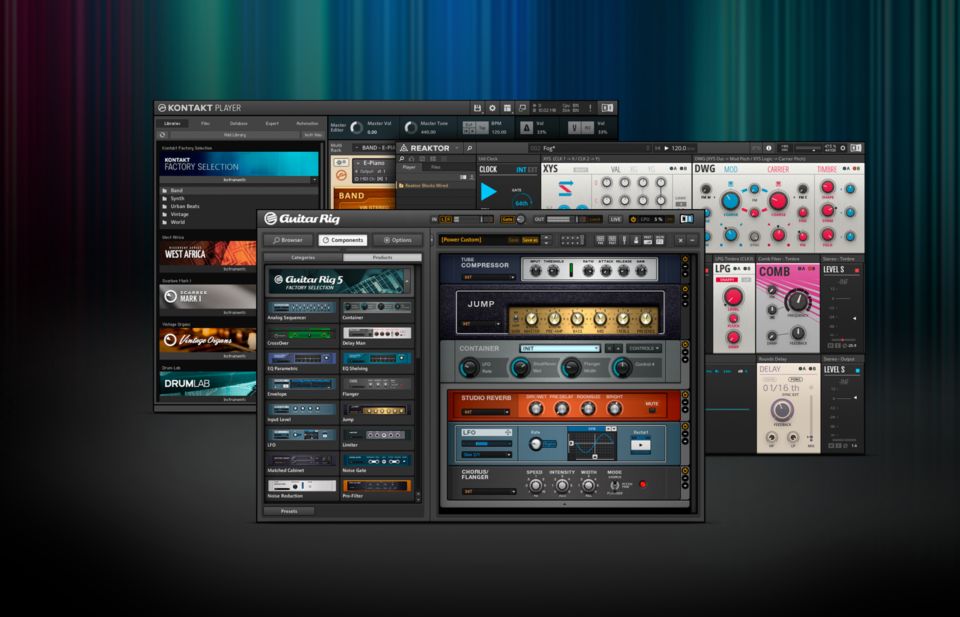System Requirements¶
Download Free Trap AU VST Plugins & VSTi Instruments Here is our colection of FREE software, VST plugins, VSTi instruments, audio utilities and DAWs. Should you know of anything that we have not listed here let us know. Domain 0.top 00.top 002.top 003.top 004.top 005.top 006.top 008.top 009.top 01.top 011.top 012.top 013.top 014.top 015.top 016.top 017.top 018.top 019.top 02.top. Top 10 most popular hanging light with lamp shade list and get free shipping.
Vcv Rack Bridge Vst Download
VCV Rack is free software, so you may simply download and run the software to see if it works.However, if Rack does not run or you are experiencing performance issues, make sure you have at least the following hardware.(Also see How do I improve performance of VCV Rack?)
Operating system: MacOS 10.7+, Windows 7+, or Linux (such as Ubuntu 16.04+)
CPU: Intel/AMD 64-bit processor from ~2011 or later
Graphics: Dedicated graphics card from ~2013 or later with the latest driver software update:
Intel drivers. Integrated (non-dedicated) graphics such as Intel HD/Iris are not recommended and cause significantly increased CPU usage.
RAM: 1GB
Disk space: 1GB
Vcv Rack Bridge Vst Download Free
Installing Rack¶
Download Rack on the VCV Rack website.
Installing on Mac¶
Download, unzip, and copy the Rack app to your Applications folder.
Installing on Linux¶
Unzip the zip file.
Installing plugins¶
Plugins extend VCV Rack’s functionality by adding one or more modules to use in your patch.Plugins are typically installed via the VCV Library.See the VCV Library Instructions section at the bottom of the VCV Library page.
If your computer is offline, you may download plugins using another computer and transfer <Rackuserfolder>/plugins-v* (See Where is the “Rack user folder”?) to the offline computer.Downloading plugins directly from the VCV Library is not supported at this time.

Installing plugins not available on the VCV Library¶
Install third-party plugins at your own risk. Like VST plugins, installing plugins from unknown sources may compromise your computer and personal information.
Plugins for Rack are distributed as ZIP files with the format <pluginslug>-<version>-<arch>.zip, e.g. MyPlugin-1.0.0-mac.zip.Download the plugin ZIP package from the vendor’s website to <Rackuserfolder>/plugins-v* (See Where is the “Rack user folder”?).Do not extract the ZIP package yourself.Rack will extract and load the plugin upon launch.
Note: Plugins must be built (compiled) before Rack can load them.GitHub hosts plugin source code, not plugin binaries, so GitHub’s green “Clone or download” button will not give you a plugin binary.However, some plugin maintainer make plugin builds available in the “Releases” section of their GitHub repository.
Note: The “major” version number (e.g. the 1 in v1.2.3) must match the major version number of Rack. See ABI/API Version.
Running Rack¶
Running on Mac¶
Launch Rack from the Applications folder or the dock.

Running on Windows¶
Click on Rack in the Start Menu.
Running on Linux¶
Double click the Rack binary.Or with the command-line, cd into the Rack folder and run ./Rack.
Command line usage¶
To launch Rack from the command line, cd into Rack’s folder, and run ./Rack, optionally with the following options.
<patchfilename>: Loads a patch file.-s<Racksystemfolder>: Sets Rack’s system folder, containing read-only program resources. Defaults toMacOS:
<appbundlepath>/Contents/ResourcesWindows: install location, such as
C:ProgramFilesVCVRackLinux: current working directory
-u<Rackuserfolder>: Sets Rack’s user folder, containing user settings, plugins, and patches. See Where is the “Rack user folder”? for the default location.-d: Enables development mode.This sets the system and user folders to the current working directory, uses the terminal (stderr) for logging, and disables Rack’s Library menu to prevent overwriting plugins.